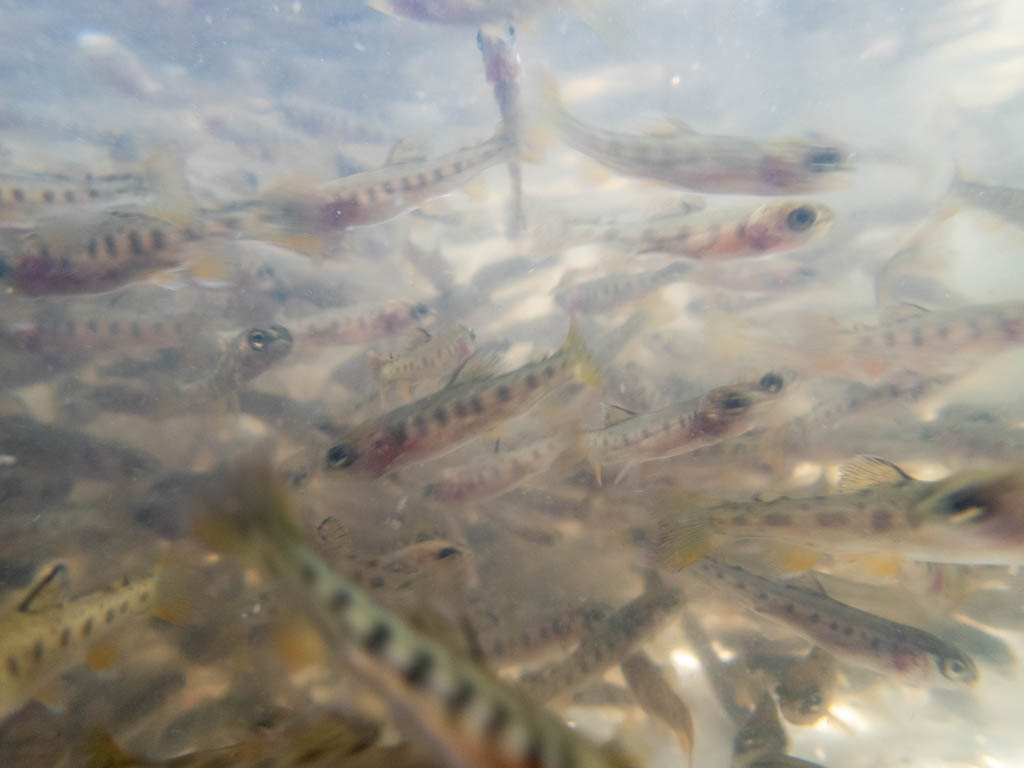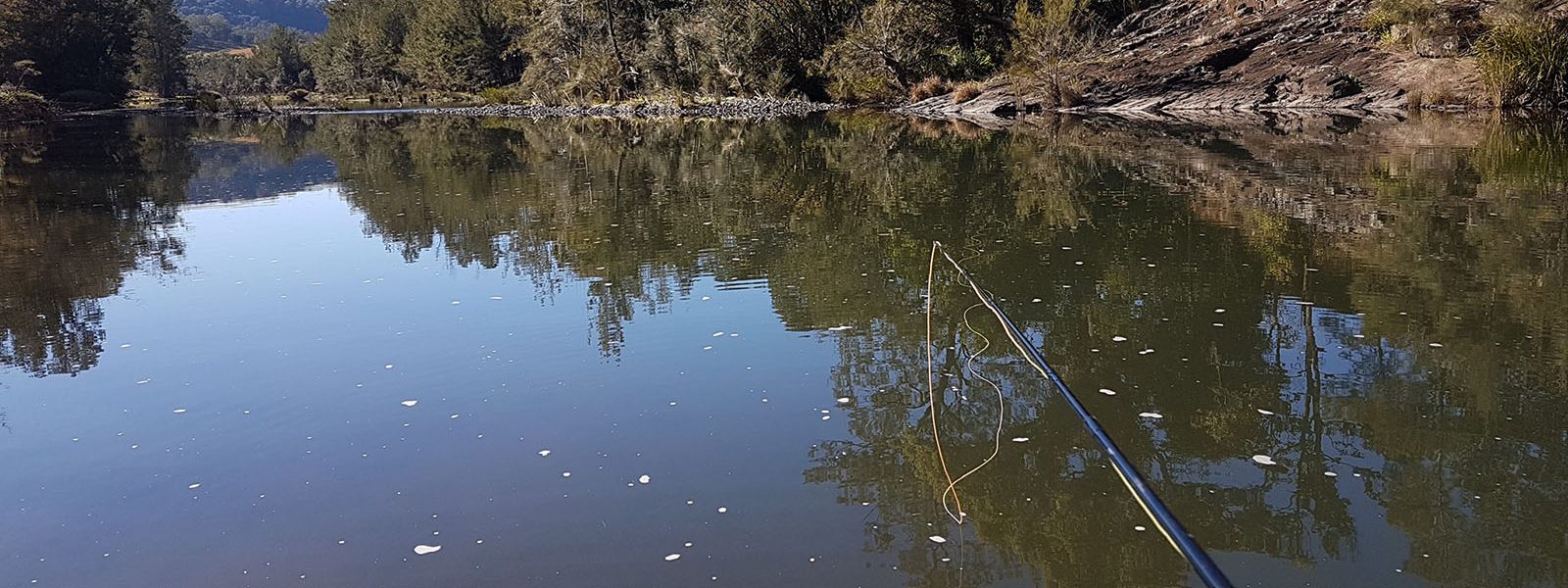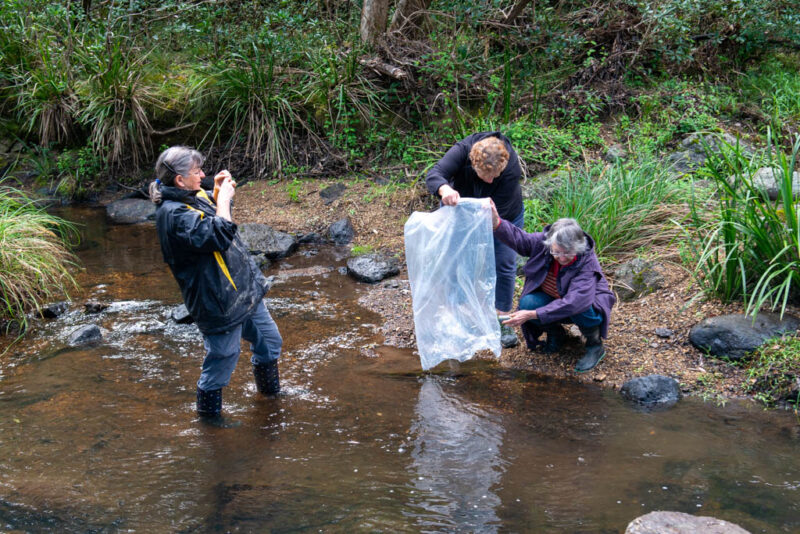HFF Flycast, October 2020
Volume 12, No. 3, October 2020

This October edition is largely devoted to our trout release. It is an annual event that takes place through our club’s membership of the New England Trout Acclimatisation Society (NETAS). The trout fingerlings are provided without cost by the NSW DPI from the Dutton Trout Hatchery, Ebor.
The trout hatchery is well worth a visit if you are travelling up that way and there are plenty of things to see and do in the area, including trout fishing which we hope to explore on a club outing next November, our Club Captains and Outings coordinator have called for expressions of interest. This would be a nice family outing. See more details in this newsletter.
Summer is almost here. Beautiful sunny days, less wind and warm water mean it’s time to slip on a pair of wading shoes and wade the sand flats that abound in our area. That flats are frequented by all manner of fish including one we should treat with respect – the stingray. So our “Know Your Fish” this month is a little different as the stingray is not a species we actively fish for and, hopefully, never catch. Nevertheless, they are a fascinating species and one we should appreciate rather than fear.
Stingray incidents are the second highest form of injury caused by marine life in the state, closely behind bluebottle stings, according to figures by NSW Ambulance. However, a little care can prevent you joining these statistics. Fatalities are very rare and, when television presenter Steve Irwin was killed in 2006, it was only the second case recorded in Australia since 1945.
Stingrays are actually very docile and curious, their usual reaction being to flee any disturbance. But they sometimes brush their fins past any new object they encounter including us. They pose little risk to divers, I have often had larger specimens swim close to me and remain there obviously curious about its new neighbour. If a diver suffers a stingray strike it is likely s/he has inadvertently threatened or cornered the animal, hovering directly over the ray or swimming in front of it, making the stingray feel trapped against a reef or obstacle. Because a stingray sees and swims forward easily, its natural escape route if alarmed is forward and they pose no danger if approached from the side.
When not actively feeding, stingrays often lie quietly on sandy or muddy bottoms with only their protruding eyes exposed, they’re easy to step on and, if pinned down, will strike reflexively, whipping its tail upward and into the person’s foot or ankle. The sharp bony spine produces a laceration and simultaneously leaves venom in the wound. The spine often breaks off in the wound causing contamination. Although the venom causes intense pain the trauma of the injury is usually more dangerous than the effects of the venom. First aid may require control of haemorrhage, as well as hot water immersion to ease the pain, and medical attention should be sought immediately.
By all means be wary of stingrays but there is no need to be afraid of these quiet inhabitants of our shallow waters. They are not aggressive and harmless if left alone.
Iain
Volume 12, No. 3, October 2020
| President's Message | 2 |
| Editor's Message | 4 |
| Executive, Committee Members and Delegates | 5 |
| Casting Practice Sessions | 6 |
| Izzy's Words of Wisdom | 7 |
| Social Welfare Report | 7 |
| Know Your Fish - Stingray | 8 |
| 2020 NETAS Trout Release | 9 |
| Proposed Outings | 22 |
| Fly Tying Night, September 15th | 24 |
| How to Tie the "Dawn or Dusk" | 26 |
| Members News and Market | 27 |
| Tip - Safe Wading in Salt Water | 27 |
| Tip - Slacken the Drag or Lose the Fish | 28 |
| Sponsors Page | 29 |

